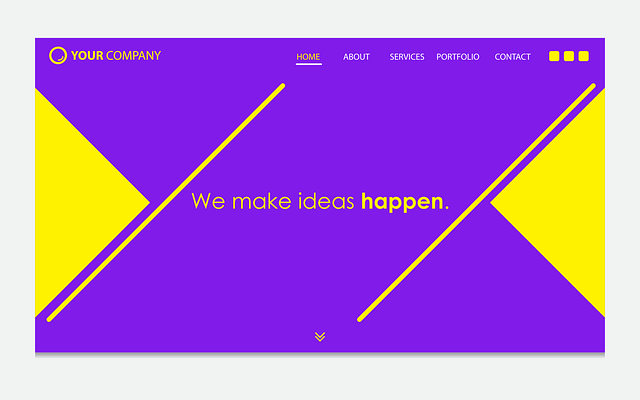UI design is more than aesthetics; it's about creating intuitive, user-friendly interfaces that enhance experiences. To excel in web and mobile UI/UX design, professionals must master core principles like consistency, accessibility, and simplicity. This involves a unified visual language, clear information architecture, and accessible features. User research is vital for understanding behaviors and preferences, guiding design strategies. Combining visual appeal with functionality, designers should leverage color theory, typography, and whitespace effectively. Responsive UI design ensures adaptability across devices, catering to diverse users. Wireframing and prototyping facilitate iterative development and user feedback. User testing identifies pain points and improves usability. Accessibility is key, aligning with WCAG guidelines for inclusive designs. Current trends focus on AI personalization, AR/VR immersion, and enhanced accessibility, shaping a future of intuitive, device-agnostic UI design.
Unleash the power of exceptional user experiences with a deep dive into the world of Web and Mobile UI/UX Design. From understanding fundamental principles like core design theories, color theory, and typography, to mastering advanced techniques such as responsive interfaces, wireframing, and accessibility, this comprehensive guide covers it all. Learn how user research drives effective strategies and discover best practices for creating visually appealing, intuitive layouts that cater to diverse users. Explore the future trends shaping the industry, ensuring your designs remain cutting-edge.
Understanding UI Design Fundamentals: Core Principles and Best Practices

UI design is more than just aesthetics; it’s about creating interfaces that are intuitive, user-friendly, and visually appealing. To excel in web and mobile UI/UX design, one must grasp the core principles that govern this discipline. These fundamentals include consistency, accessibility, and simplicity. A well-designed UI adheres to a unified visual language, ensuring users can effortlessly navigate across different pages or screens. For instance, consistent use of colours, fonts, and button styles helps users build familiarity and predictability.
Additionally, best practices in UI design prioritize user needs and expectations. Designers should aim for clear information architecture, where content is organized logically, making it easy for users to find what they’re looking for. Accessibility is another vital aspect, ensuring that interfaces work seamlessly for everyone, including those with disabilities. This involves incorporating features like keyboard navigation, alternative text for images, and high contrast options. By following these UI design fundamentals and best practices, professionals can create interfaces that not only look stunning but also deliver exceptional user experiences.
The Role of User Research in Shaping Effective UI/UX Strategies

User research is a cornerstone in the development of successful and user-centric UI/UX strategies. It involves gathering insights and understanding user behaviors, preferences, and needs, which are essential for creating intuitive and engaging digital experiences. By conducting thorough research, designers can gain valuable knowledge about their target audience, enabling them to make informed decisions throughout the design process.
This research phase allows designers to identify pain points in existing interfaces, uncover user expectations, and discover trends that shape modern UI design. It involves a range of methods, from surveys and interviews to usability testing and analytics, ensuring a comprehensive understanding of user interactions. Such insights empower designers to create UI layouts that are not only aesthetically pleasing but also highly functional, catering to users’ demands and ultimately driving better engagement and conversion rates.
Creating Visually Appealing and Intuitive Layouts: A Comprehensive Guide

Creating visually appealing and intuitive layouts is a cornerstone of effective UI design. It involves striking a balance between aesthetics and functionality, ensuring that every element on the screen serves a purpose while enhancing user engagement. A comprehensive guide to this process begins with understanding your target audience. Incorporate principles like consistency in design, clear hierarchy, and meaningful visual cues to make navigation effortless.
Use of color schemes, typography, and whitespace is crucial. Choose palettes that resonate with your brand and users alike, pair fonts that are easy on the eyes for readability, and employ negative space strategically to avoid clutter. Regularly test and iterate based on user feedback to refine layouts that not only look stunning but also foster intuitive interactions, ultimately elevating the overall UI design experience.
Navigating Color Theory and Typography Choices for Optimal UX

In UI design, color theory and typography are fundamental elements that significantly impact user experience (UX). Choosing the right colors and fonts can enhance or hinder a user’s interaction with digital interfaces. Colors evoke emotions and influence how users perceive a brand, while typography choices determine readability and the overall aesthetic appeal of a design. Balancing contrast, harmony, and accessibility considerations ensures that text remains legible against background hues.
For optimal UX, designers must consider color blindness and other visual impairments, selecting palettes that cater to diverse audiences. Typography decisions, such as font styles, sizes, and line spacing, should facilitate smooth scanning and comprehension of content. Incorporating best practices in color theory and typography enhances the user’s journey, making interfaces inviting, intuitive, and functional across various devices and platforms.
Designing Responsive Interfaces: Adapting to Various Screens and Devices

In today’s digital landscape, designing responsive interfaces is no longer an option but a necessity. UI design professionals must create experiences that seamlessly adapt to various screens and devices, ensuring consistency and usability across platforms. This involves considering not just popular devices like smartphones and tablets but also lesser-used ones, such as smartwatches or smart speakers. By employing flexible layouts, media queries, and scalable graphics, designers can craft interfaces that adjust gracefully to different screen sizes, resolutions, and orientations.
Responsive design isn’t just about technical implementation; it’s an essential part of creating inclusive UI experiences. It means accounting for users with diverse abilities and ensuring accessibility features work effectively. By adopting responsive principles, designers can create web and mobile applications that cater to a broader audience, enhancing user satisfaction and engagement.
Wireframing and Prototyping Techniques for Efficient UI Development

Wireframing and prototyping are essential techniques in the UI/UX design process, offering a structured approach to building user interfaces. Wireframes, created with simple geometric shapes and minimal text, provide a visual framework for the layout and functionality of a webpage or app. This low-fidelity technique allows designers to focus on the placement of elements, navigation flows, and overall usability without getting bogged down by visual aesthetics. By quickly iterating through multiple wireframe versions, design teams can identify and resolve issues early in the development cycle, ensuring a more seamless user experience.
Prototyping takes wireframing a step further by adding interactivity and visual design elements. Tools like Figma, Sketch, or Adobe XD enable designers to create high-fidelity prototypes that mimic the final product. These prototypes facilitate user testing, gathering valuable feedback on the UI’s usability and visual appeal. Additionally, prototyping allows for the exploration of different design directions, ensuring that the final UI design aligns with user preferences and business goals. This iterative process streamlines development, promotes collaboration, and ultimately results in a more intuitive and engaging UI design.
User Testing and Iteration: Ensuring a Seamless User Experience

User testing is an indispensable phase in the UI/UX design process, enabling designers and developers to gain valuable insights into how real users interact with their digital products. By observing users navigate through prototypes or live applications, designers can identify pain points, confusion, and areas of improvement that may have been overlooked during initial design iterations. This iterative approach, where user feedback is continuously incorporated, leads to a more seamless and intuitive user experience.
Through repeated testing and refinement, UI designs become increasingly user-centric, aligning with the needs and expectations of their target audience. By embracing this cycle of testing and iteration, designers can refine their creations, ensuring they deliver on the promise of enhanced usability, accessibility, and visual appeal—all key aspects of effective UI design.
Accessibility in UI Design: Making Digital Products Inclusive for All

In modern web and mobile UI/UX design, accessibility is no longer an afterthought but a core principle. It ensures that digital products are inclusive and usable by people with diverse abilities, including those with visual, auditory, motor, or cognitive disabilities. By implementing guidelines such as WCAG (Web Content Accessibility Guidelines), designers can create interfaces that support assistive technologies like screen readers and provide alternatives for non-text content. This involves using semantic HTML, providing clear structure, offering keyboard navigation, and ensuring sufficient color contrast.
An inclusive UI design considers not only the technical aspects but also the user experience. It means designing with empathy, understanding that users may have different interactions based on their needs. Simple changes like allowing users to customize font sizes, enabling text-to-speech functionality, or providing alternative interfaces for touch versus keyboard input can significantly enhance accessibility. Ultimately, these practices not only comply with legal requirements but also expand the user base and create a more welcoming digital environment for everyone.
Future Trends in Web and Mobile UI/UX: What to Expect Next

The future of Web and Mobile UI/UX design is brimming with innovative trends that promise to enhance user experiences. One prominent trend is the increased emphasis on accessibility, ensuring interfaces are inclusive for users with diverse abilities. Designers will also explore more interactive and dynamic UIs, incorporating augmented reality (AR) and virtual reality (VR) elements to create immersive digital environments.
Personalization is another key area of focus, with AI-driven algorithms playing a significant role in tailoring content and layouts based on individual user preferences. Additionally, there’s a growing demand for responsive designs that seamlessly adapt across various devices and screen sizes, blurring the lines between web, mobile, and even wearable interfaces. These trends collectively point towards a future where UI/UX design becomes increasingly intuitive, engaging, and tailored to individual needs.
